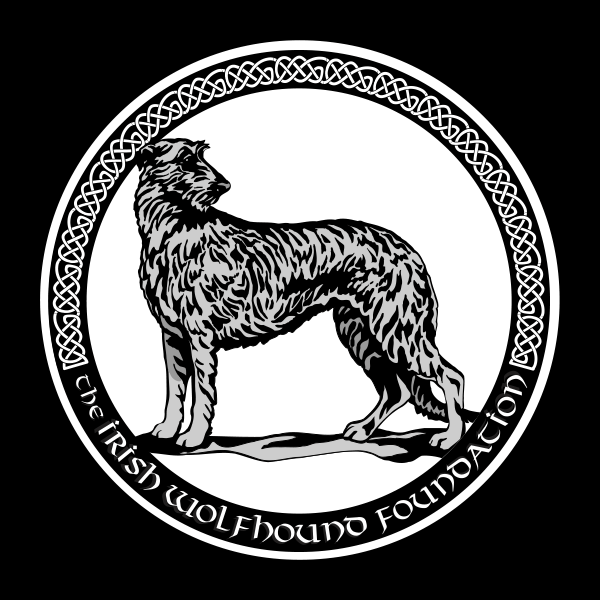Project Update: Identification of genetic risk factors of Osteosarcoma in Irish Wolfhounds
Dear Members of the Irish Wolfhound Foundation,
This update is intended to provide a brief summary of work completed since our last update in August, 2012. Following, please find a brief review of the project’s key objectives and a summary of work-to-date for each.
Task 1. Tissue collection from sick and healthy dogs
In an effort to strengthen the analysis discussed in our August, 2012 update we have collected and genotyped a total of 101 novel samples (this includes the 51 previously reported samples, as well as 50 new samples). Of the novel samples, 45 are from dogs diagnosed with osteosarcoma, and 56 are from older healthy dogs (i.e. healthy controls). These samples were recently run on the 170k Illumina SNP array.
This number exceeds our original goal of collecting 80 novel samples (40 healthy controls and 40 cases) for this round of genotyping; however, we would like to continue sample collection from both osteosarcoma-affected dogs and older, healthy dogs to facilitate further investigation into other regions of the genome that may also play a role in the disease.
One critical way that the Irish Wolfhound community can continue to support this and other canine health projects after providing a biological sample is to persist in submitting health update forms on
an annual or biannual basis, even if there has been no change in the dog’s health status.
Options for online and downloadable (i.e. paper) forms can be found at: http://www.broadinstitute.org/doghealthupdate
Reminders are sent to dog owners via email by our Dog Disease Research team members one to two times annually, however, we find it to be enormously helpful for breed clubs and associations to also remind their members to complete these health updates annually or biannually.
Again, we are not only looking for changes in health status -- updates that can confirm our healthy controls are also critical for the project!
Task 2. Increase genotyping to increase the power of the analysis
In our August update we reported finding two regions of association by including only cases < 6 years old (28 cases with mean age 4.5 years) and only controls > 6 years (62 controls, mean age 9.0 years). We are now preparing to submit a paper to a high profile journal describing these early findings. In this paper several risk factors are described.
Since osteosarcoma is a complex disease we would expect to find more regions that play a role in its development. Therefore, Task 2 aims to identify additional risk factors by genotyping additional dogs which will allow us to strengthen the analysis and provide a clearer view of additional genes that contribute significantly to the disease.
The basic quality control of the data has now been performed resulting in a total data set of 128 cases and 134 controls that are unique and of high quality. Analysis to identify additional risk factors
will now begin.
Task 3. Find the mutations for the major genomic regions linked to disease.
This work is already in progress and will be further expanded upon completion of Task 2. For now we are examining previously associated regions in a total of 16 dogs with the disease and 16 without the disease to allow the identification of the specific disease mutations. This is an enormous task that will be ongoing throughout 2013.
We have found one actual mutation, from which we are beginning to learn about the disease mechanism.
We expect to generate more data soon based on the results from Task 2. Additional analysis of the sequencing data will be ongoing.
Tasks 4-6 are dependent on the results from tasks 2 and 3 and have therefore not started.
Task 4. Develop guidelines and a DNA test for risk prediction.
Task 5. Understand the function of the mutations to unravel disease mechanisms.
Task 6. In the long term, we would like to facilitate the development of new treatment options and help guide selection of treatment based on DNA predisposition.
Principal Investigator:
Dr. Kerstin Lindblad-Toh
Director, Vertebrate Genome Biology, The Broad Institute, 7 Cambridge Center, Cambridge, MA 02142
Professor, Comparative Genetics, Uppsala University, Sweden
Email: kersli@broadinstitute.org
Lindblad-Toh lab members:
Dr. Emma Ivansson, Uppsala University, Postdoctoral Fellow, Project Lead
Dr. Elinor Karlsson, Broad Institute, Postdoctoral Fellow, Computational Biology
Dr. Snaevar Sigurdsson, Broad Institute (Former), Postdoctoral Fellow
Dr. Cedric Howald, Broad Institute, Postdoctoral Fellow
Michele Perloski, Broad Institute, Sample coordinator
Collaborators:
Dr. Matthew Breen, North Carolina State University
Dr. Jaime Modiano, University of Minnesota
Dr. Guillermo Couto, Ohio State University
Dr. Mike Starkey, Animal Health Trust, United Kingdom
/update prepared for Kerstin Lindblad-Toh by Leslie Burke


